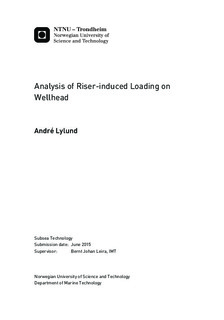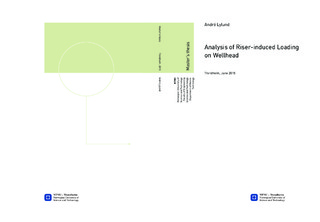| dc.description.abstract | When riser systems are connected to subsea wells, large forces and moments are transmitted to the wellheads. This is due to the large weight of the blowout preventer and the environmental excitation forces that are transmitted to the wellhead. These loads can lead to fatigue of the wellhead.
In this thesis a global model of a drilling riser system is analysed in the computer program RIFLEX. The loads that are particularly interesting, are the loads that accumulate fatigue damage to the wellhead. The sea states given in a scatter diagram for the North Sea are investigated in order to find which sea states that contributes most to the accumulation of fatigue damage.
Results from a local analysis of the well is provided by Statoil. These results includes important input parameters which are used in the fatigue assessment in this thesis. For that reason, the results from the fatigue assessment concluded in this thesis, are highly dependent on the input parameters from Statoil.
The thesis can be divided into two parts. The first part is a literature review that gives background knowledge on the subject. The literature review begins with a presentation of a typical drilling riser system and its main components. Thereafter, an introduction to the analysis and simulation software RIFLEX is given. RIFLEX is used for static and dynamic analyses of the drilling riser system. Methods for global riser analyses are then presented. Relevant theory for fatigue design is also discussed in this part.
The second portion of the thesis begins with a presentation of the case studied in this thesis. This includes the local model, provided by Statoil, and a global model, which is established in RIFLEX. Static and dynamic analyses of the RIFLEX model is then performed, and the results are post processed and presented in the result section of the thesis. Parameter studies on soil stiffness, current, and blowout preventer (BOP)-size are also conducted. Since results from the local model is provided, the author has not been able to update the parameters studied in the local model. This is a limitation that may have caused some unexpected tendencies in results for the parameter studies.
In this thesis, the fatigue damage accumulated during the initial construction phase of the well, is studied. This phase involves connection of a heavy drilling rig to the well. This operation may have a duration of a month or so. After the connection is completed, the well must have sufficient fatigue capacity to operate throughout its estimated lifetime. | |

